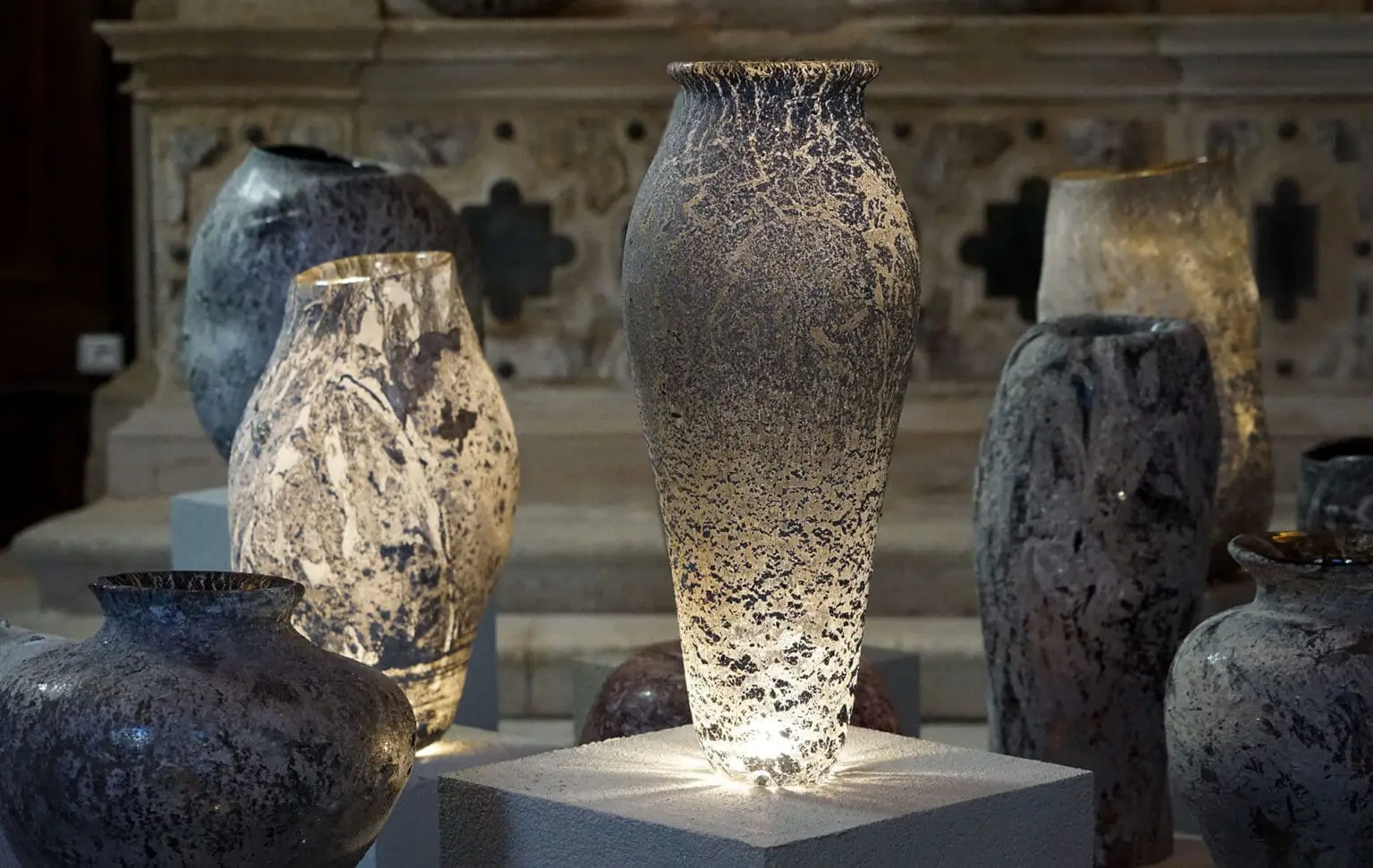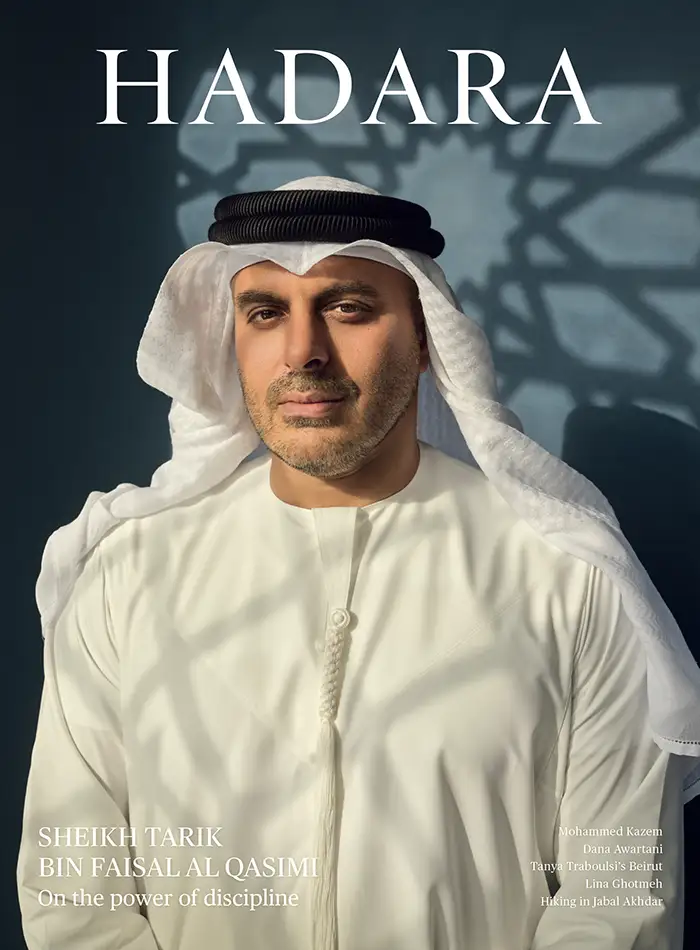Design without limits
Sisters Tessa and Tara Sakhi’s work ranges from big to small, from architecture to art to objects, always challenging ideas about materials and identity.
By Charles Shafaieh
Photograph by Alain Sauma
In June 2018, a few Beirut streets appeared a little more welcoming to pedestrians than usual. The ubiquitous security barriers looked different: Some were transformed into seating, with cloth pulled over the intertwined metal; others, such as interlocking barricades, became tubular plant and flower holders.
The disruption and surprise inherent to this subtle installation that reclaimed public space, cheekily titled Holidays in the Sun, are central to Tara and Tessa Sakhi’s practice. Born in Beirut, the Lebanese-Polish sisters reject simple classification and normative opinions, whether about cultural identity or the limits of materials. Working in commercial architecture, sculpture, film, and large and small-scale installations, among many other areas, the pair embrace hybridity at their studio, T Sakhi, which they founded in 2016.
Architecture and design have been a constant throughout their lives—their parents work in the same field. As young children, they would walk amongst drafting tables, palettes, and other tools in the home office every day. “It was so exciting, growing up with those textures and colours,” Tessa recalls.
Their parents never imposed this career on their children. But once the sisters pursued a similar path, they tried persuading Tessa and Tara to join their teams. “We always joked, saying, ‘We don’t need you guys!’” Tara says, laughing. “Instead, we created our own bubble.”
That bubble began with interior projects at residential properties in Beirut and soon evolved to designing restaurants and nightclubs, for which they conceived every detail, from the spatial configuration to the doorknobs. They then built on their product-design experience and started making handcrafted, one-of-a-kind art objects. Despite this diversity, what has remained constant is an appreciation for human interaction, both in the creative process and in how audiences engage with their pieces.
“Whenever we are involved in projects in different cities, we try to work with local craftsmen,” Tessa says, citing their use of stone in Egypt, textiles in Mexico, and metal and wood in Lebanon. Their latest collection, a set of otherworldly vessels made from glass and discarded metals, titled Jurat (Arabic for “urn”), resulted from a collaboration with artisans in Murano, an island that is part of the municipality of Venice, the sisters’ new home.
“It was a struggle to get them to do something new—especially because we’re not from Murano or Italy, and we’re women. But we persisted, and they saw we kept coming back.”

The Jurat pieces were exhibited for a month at the Chiesa San Gallo in Venice. Because of the humidity, the temperature, and the light, the metal in the works continued to oxidise. Photo courtesy of T Sakhi.
“The collaboration, produced in partnership with Cairo’s Le Lab gallery, had a challenging start. “It’s very demanding work, and the glassblowers are very narrow-minded in the sense that they do what they know how to do with an expertise learned over generations, going from father to son,” Tessa says. “It was a struggle to get them to do something new—especially because we’re not from Murano or Italy, and we’re women. But we persisted, and they saw we kept coming back. We wouldn’t have been able to accomplish the project without their expertise.”
Some of the resistance resulted from the sisters’ radical experimentation. Rather than begin with a shape or texture in mind, they let a library of unconventional materials dictate the vessels’ final forms. They recovered aluminium and steel waste in different states, from powder to chunks, from nearby factories, to work into the glass—a process that required much experimentation. “The method guided us,” Tessa says. “For instance, there would be so much metal in one piece that it would collapse the glass. We went from very classical shapes and then started poking, pinching, and playing with them. It was beautiful because there was no idea about what it was going to look like. The more we discovered different textures, the more passionate the glassblowers were.”
The results play with our expectations of glass. The sculptural objects appear simultaneously contemporary and as if they were excavated from Roman tombs, or from within a volcano. Our understanding of time is confused as they meld the modern and the ancient, and connect the history of early Phoenician glassmaking to its evolution in Venice. They evoke death, in their nod to cinerary urns, and rebirth, through the sisters’ innovation of this traditional craft and in their refusal to treat these metal pieces as waste. The impulse to reappropriate what others see as scraps is equal parts aesthetic curiosity and sustainability focused. Their coffee-table collection, Reconciled Fragments, features resin-encased marble pieces that had been discarded at Lebanese factories.
Even now, the Jurat pieces interact with time in ways that surprise and delight the sisters. “While they were exhibited for a month at the Chiesa San Gallo in Venice, we realised that they were still morphing. Because of the humidity, the temperature, and the light, the metal continued to oxidise,” Tara says.
None of their work is static though, usually due to human intervention. They do not prescribe to the ultra-seriousness that permeates the art world, in which ‘Don’t touch!’ has become a commandment. They never predicted that people would start climbing their 2019 installation WAL(L)TZ in Dubai, a wall made of foam that in part represented the social, political, and economic barriers in Lebanon. It caused the wall to erode, which fascinated the sisters. “You’re supposed to get closer to whatever the design is, in order to explore and bring out curiosity. We enjoy watching children because they’re much more daring than adults,” Tessa says.
A permanent, large-scale project in Dubai, scheduled for completion in April, will hinge entirely on human needs and also unite the duo’s many disciplines. They are designing the main public space and garden as well as pedestrian and vehicle circulation at Alserkal Avenue, an arts and culture district in the Al Quoz industrial zone. They will also introduce seating and shading throughout the area, producing the pieces from local materials and working with craftsmen and artisans from the region. “We want to create installations that connect people to the community, to have them engage with public space and feel like creators,” Tara says.
Their intentions echo the warmth and calm they’ve experienced since moving to Venice, where they arrived in 2020, shortly after the blast at Beirut port. What could have been a traumatic rupture was instead restorative. “Venice healed us,” Tara says, as Tessa nods in agreement. “In Lebanon, there was so much violence and destruction. Here you have no cars or sound pollution. It made us believe again in the beauty of humanity and in what we have created.”




